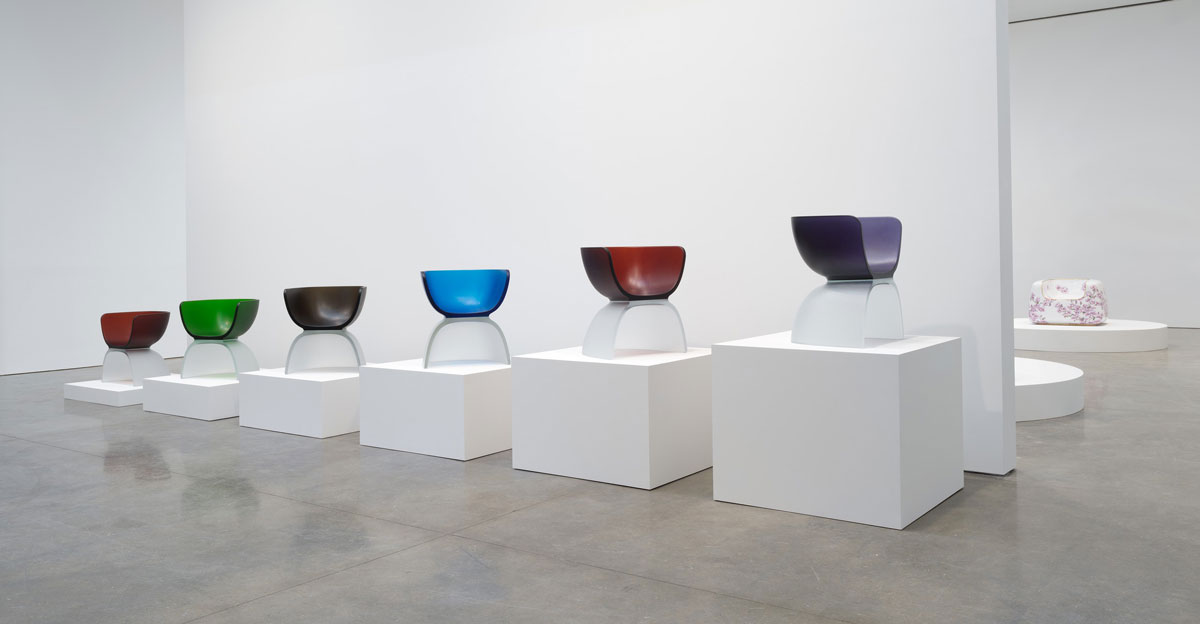DESIGN:Marc Newson
 Marc Newson has been described as one of the most influential designers of his generation. He has worked across an extremely wide range of disciplines, and his clients include some of the best-known and most prestigious brands in the world spanning diverse sectors from manufacturing and technology to transportation, fashion, and the luxury goods sector.
Marc Newson has been described as one of the most influential designers of his generation. He has worked across an extremely wide range of disciplines, and his clients include some of the best-known and most prestigious brands in the world spanning diverse sectors from manufacturing and technology to transportation, fashion, and the luxury goods sector.
By Efi Michalarou
Photo: Gagosian Archive
Mar Newson attended the Sydney College of the Arts and graduated in 1984 with a degree in jewelry and sculpture. The following year he won a grant from the Crafts Board of the Australia Council, which enabled him to create his breakthrough piece, the aluminum and fibreglass “Lockheed Lounge” (1986). Like many of his later furniture pieces, it is made of atypical materials. In 1987 Newson moved to Japan, where he worked mostly with the design company Idée. In 1991 Newson moved to Paris, where he designed household products, first for Philippe Starck and later for Iittala in Finland and Alessi, Magis, and Flos in Italy. He formed a partnership with the Swiss businessman Oliver Ike to create Ikepod, a watch company. In 1997 Newson moved to London, where he began to design vehicles. In 2006 Newson was named creative director of Qantas Airways, for which he designed luxurious first-class lounges in the Melbourne and Sydney international airports. In Britain he was named on 2006 Royal Designer for Industry. New works by Marc Newson are on presentation at Gagosian, this is Newson’s first exhibition of limited-edition furniture pieces in more than a decade. Revisiting his roots as a jeweler and silversmith, in this exhibition Newson explores increasingly rare decorative techniques at an unconventionally large, even unprecedented, scale. His cast glass chairs, made in the Czech Republic, are continuous symmetrical forms comprised of two hollow quarter-spheres. The boldly colored upper halves rest on clear bases, which absorb some of the reflected hues in their clouded interiors, an effect that subtly changes depending on the vantage point. For the “Murrina” works (2017), Newson utilizes an intricate classical glass-making technique to create streamlined desks, tables, and consoles. Their sloping and beveled planes are unified beneath pulsing fields of repeated cell-like spots on vivid colored grounds, made by fusing glass rods together and then slicing them to reveal patterned cross-sections. In another series of desks, chairs, and lounges, Newson has employed Chinese cloisonné, an enameling technique that dates back to the 13th or 14th Century. Made by hand in Beijing, the cloisonné works blur the boundaries between sculpture, furniture, and ornament. Their patterns and motifs reveal Newson’s wide-ranging aesthetic influences: from his signature “orgone” pattern to more traditional Chinese floral motifs, such as large magnolias on a white ground, or cherry blossom branches set against opaque black enamel. Finally, the exhibition includes a new series of aluminum surfboards, following the nickel version that Newson created for the American surfer Garrett McNamara as well as an Aikuchi sword made by the swordsmith Saburo Nobufusa Hokke, a Japanese Living National Treasure from the Tōhoku region. By relocating these objects into the realm of fine art, Newson underscores their cultural significance, showing the value of technical precision to be both a functional and an aesthetic concern.
Info: Gagosian Gallery, 522 West 21st Street, New York, Duration: 17/1-20/2/19, Days & Hours: Mon-Sat 10:00-18:00, https://gagosian.com







